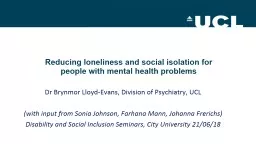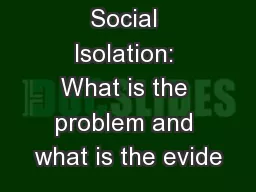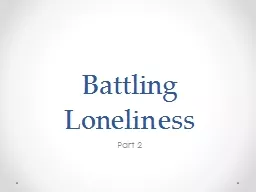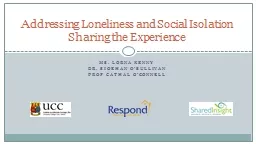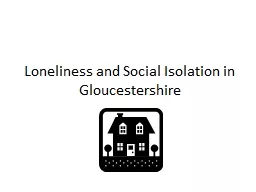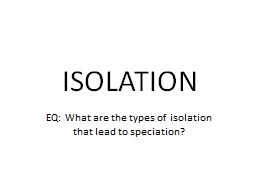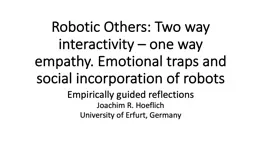PPT-Reducing loneliness and social isolation for people with mental health problems
Author : alexa-scheidler | Published Date : 2018-11-03
Dr Brynmor LloydEvans Division of Psychiatry UCL with input from Sonia Johnson Farhana Mann Johanna Frerichs Disability and Social Inclusion Seminars City
Presentation Embed Code
Download Presentation
Download Presentation The PPT/PDF document "Reducing loneliness and social isolation..." is the property of its rightful owner. Permission is granted to download and print the materials on this website for personal, non-commercial use only, and to display it on your personal computer provided you do not modify the materials and that you retain all copyright notices contained in the materials. By downloading content from our website, you accept the terms of this agreement.
Reducing loneliness and social isolation for people with mental health problems: Transcript
Download Rules Of Document
"Reducing loneliness and social isolation for people with mental health problems"The content belongs to its owner. You may download and print it for personal use, without modification, and keep all copyright notices. By downloading, you agree to these terms.
Related Documents

